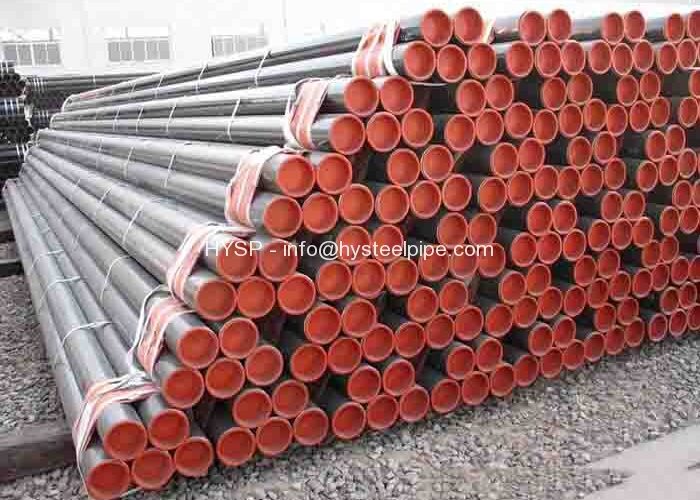What is Heat Treatment in Steel Pipe Industry ?
Heat Treatment is very important because through heating, pipes could have much better physical and mechanical properties for all application of pipes, no matter gas or oil line pipe, water pipe or some other pressure pipes.
Definition
Heat treatment is the process of heating and cooling metals to achieve desired physical and mechanical properties through modification of their crystalline structure. The temperature, length of time, and rate of cooling after heat treatment will all impact properties dramatically. The most common reasons to heat treat include increasing strength or hardness, increasing toughness, improving ductility and maximizing corrosion resistance.
Why Heat Treatment?
We heat treat metals in an attempt to optimise the mechanical and physical properties for a given application. Most people think of heat treatment as a process for hardening metal. This is not necessarily so, as many heat treatments are applied to soften metal in order to allow metal working operations such as deep drawing, cold forging and machining.
Where increased strength and wear resistance is required, hardening and tempering treatments are given. Extremely hard steels find applications in cutting tools where highly defined edges must be maintained and heat treatment of these steels is a critical operation. Hard surfaces with ductile base material may be developed by heat treatment.
There are also the solution heat treatments and ageing processes designed to increase the strength of some non ferrous metals and precipitation hardening steels.
Heat treatment is a significant industry and forms a basic part of the industrial infrastructure of countries.
Five Different Heat Treatment Technique
1. Annealing
Annealing is a rather generalized term. Annealing consists of heating a metal to a specific temperature and then cooling at a rate that will produce a refined microstructure. The rate of cooling is generally slow. Annealing is most often used to soften a metal for cold working, to improve machinability, or to enhance properties like electrical conductivity.
2. Normalizing
Normalizing is a technique used to provide uniformity in grain size and composition throughout an alloy. The term is often used for ferrous alloys that have been austenitized and then cooled in open air.[17] Normalizing not only produces pearlite, but also bainite sometimes martensite, which gives harder and stronger steel, but with less ductility for the same composition than full annealing.
3. Stress relieving
Stress relieving is a technique to remove or reduce the internal stresses created in a metal. These stresses may be caused in a number of ways, ranging from cold working to non-uniform cooling. Stress relieving is usually accomplished by heating a metal below the lower critical temperature and then cooling uniformly.
4. Quenching
Quenching is a process of cooling a metal at a rapid rate. This is most often done to produce a martensite transformation. In ferrous alloys, this will often produce a harder metal, while non-ferrous alloys will usually become softer than normal.
5. Tempering
Untempered martensitic steel, while very hard, is too brittle to be useful for most applications. A method for alleviating this problem is called tempering. Most applications require that quenched parts be tempered. Tempering consists of heating steel below the lower critical temperature, (often from 400 to 1105 ˚F or 205 to 595 ˚C, depending on the desired results), to impart some toughness. Higher tempering temperatures (may be up to 1,300 ˚F or 700 ˚C, depending on the alloy and application) are sometimes used to impart further ductility, although some yield strength is lost.
Reference: en.wikipedia.org, www.azom.com, metals.about.com
Send Enquiry Now
- 168#, Miao Qian Xi Jie, Yue Xiu District, Guangzhou, China
- ENQUIRY@HYSTEELPIPE.COM
- CONTACT US HERE !
New Products

ASTM A335 Grade P22 Alloy Pipe Steel 3inch SCH120
HYSP supplies high quality ASTM A335 Grade P22 Alloy Pipe Steel and tube 3inch SCH120 for high pressure and temperature applications.
ERW Steel Tubing 12inch ASTM A53 B
HYSP Steel Pipe supply you ERW Steel Tubing 12inch ASTM A53 B SCH40 or API 5L ERW steel pipes for your gas and oil line pipe or water pipes application.
API 5L B ERW Steel Tube OD 426MM
HYSP makes API 5L B ERW Steel Tube OD 426mm x 9.53mm WT DRL for your applications like gas and oil line pipe. we can customize size and steel grade per request.
L235 ERW Pipe EN10224 OD 323.9mm
HYSP steel pipe makes L235 ERW Pipe EN10224 OD323.9mm steel tubes for the conveyance of water and other aqueous liquids. we also produce as required size.

